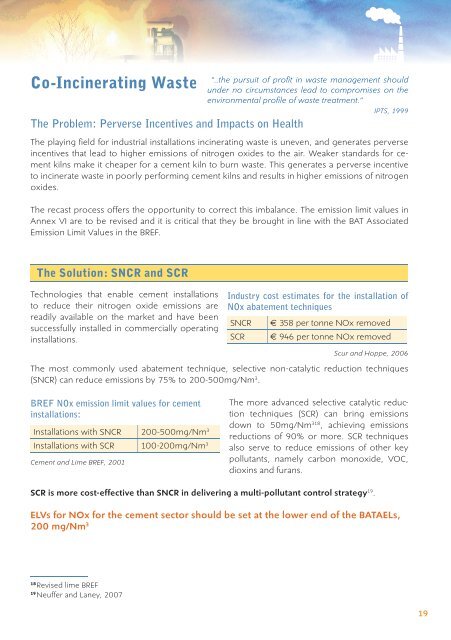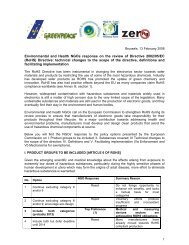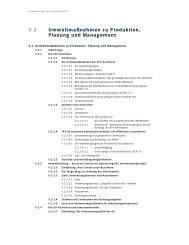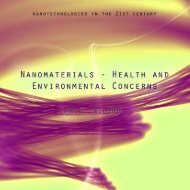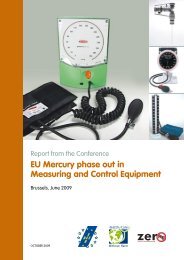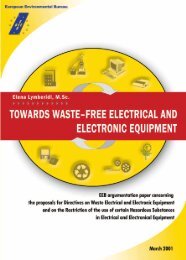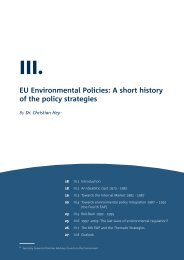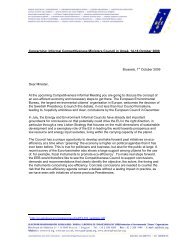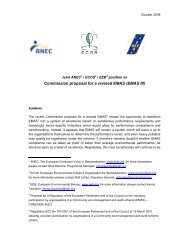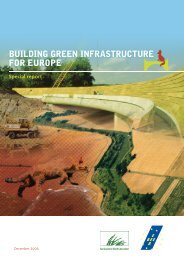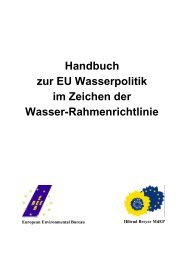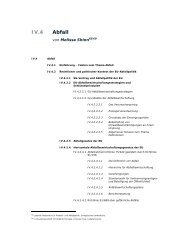A push for cleaner industrial production - EEB
A push for cleaner industrial production - EEB
A push for cleaner industrial production - EEB
You also want an ePaper? Increase the reach of your titles
YUMPU automatically turns print PDFs into web optimized ePapers that Google loves.
Co-Incinerating Waste<br />
The Problem: Perverse Incentives and Impacts on Health<br />
“..the pursuit of profit in waste management should<br />
under no circumstances lead to compromises on the<br />
environmental profile of waste treatment.”<br />
IPTS, 1999<br />
The playing field <strong>for</strong> <strong>industrial</strong> installations incinerating waste is uneven, and generates perverse<br />
incentives that lead to higher emissions of nitrogen oxides to the air. Weaker standards <strong>for</strong> cement<br />
kilns make it cheaper <strong>for</strong> a cement kiln to burn waste. This generates a perverse incentive<br />
to incinerate waste in poorly per<strong>for</strong>ming cement kilns and results in higher emissions of nitrogen<br />
oxides.<br />
The recast process offers the opportunity to correct this imbalance. The emission limit values in<br />
Annex VI are to be revised and it is critical that they be brought in line with the BAT Associated<br />
Emission Limit Values in the BREF.<br />
The Solution: SNCR and SCR<br />
Technologies that enable cement installations<br />
to reduce their nitrogen oxide emissions are<br />
readily available on the market and have been<br />
successfully installed in commercially operating<br />
installations.<br />
Industry cost estimates <strong>for</strong> the installation of<br />
NOx abatement techniques<br />
SNCR<br />
SCR<br />
€ 358 per tonne NOx removed<br />
€ 946 per tonne NOx removed<br />
Scur and Hoppe, 2006<br />
The most commonly used abatement technique, selective non-catalytic reduction techniques<br />
(SNCR) can reduce emissions by 75% to 200-500mg/Nm 3 .<br />
BREF NOx emission limit values <strong>for</strong> cement<br />
installations:<br />
Installations with SNCR 200-500mg/Nm 3<br />
Installations with SCR 100-200mg/Nm 3<br />
Cement and Lime BREF, 2001<br />
The more advanced selective catalytic reduction<br />
techniques (SCR) can bring emissions<br />
down to 50mg/Nm 318 , achieving emissions<br />
reductions of 90% or more. SCR techniques<br />
also serve to reduce emissions of other key<br />
pollutants, namely carbon monoxide, VOC,<br />
dioxins and furans.<br />
SCR is more cost-effective than SNCR in delivering a multi-pollutant control strategy 19 .<br />
ELVs <strong>for</strong> NOx <strong>for</strong> the cement sector should be set at the lower end of the BATAELs,<br />
200 mg/Nm 3<br />
18<br />
Revised lime BREF<br />
19<br />
Neuffer and Laney, 2007<br />
19


